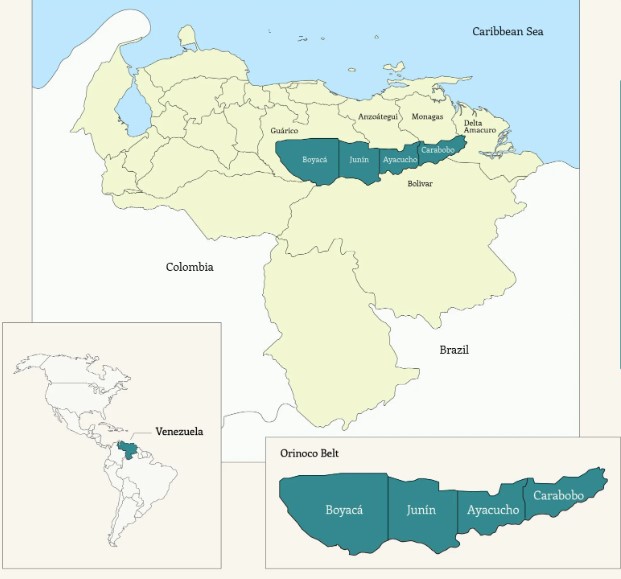Mains: GS-III – Internal Security | Role of external state and non-state actors in creating challenges to internal security.
Recenlty, Maoism in India has been significantly curbed and the dip in Maoist-related violence, especially over the last two years, has restricted the insurgency to few pockets in the Bastar division of Chhattisgarh.
To know more about Maoism in India, click here
Mains: GS IV – Ethics
Acid attacks in India continue to be a horrific form of gender-based violence that leaves victims physically and psychologically scarred.
Prelims: Current events of national and international importance | Geography
Why in News?
The United States has recently turned its attention to Venezuela’s vast mineral reserves, particularly in the Orinoco Belt and the Guiana Shield.
Orinoco Belt
20% of the world’s proven reserves of heavy and extra-heavy crude oil or a quarter of the reserves of all nations within OPEC lie within Venezuela’s Orinoco Belt.

Guiana Shield
The Guiana Shield holds approximately 20% of the world's fresh water and stores about 18% of the world's tropical forest carbon.

References
Down to Earth | Orinoco belt & Guiana Shield
Prelims: Current events of national and international importance | Goverenment policies and interventions
Why in News?
The Ministry of Agriculture & Farmers Welfare has released the Draft Pesticides Management Bill, 2025, for consultation with all stakeholders and the public.
References
Prelims: Current events of national and international importance | Art and Culture
Why in News?
Somnath Swabhiman Parv marks 1,000 years of resilience since the first attack on the Somnath Temple, celebrating its enduring faith and revival.

Reference
The New Indian Express | Somnath Swabhiman Parv
Prelims: Current events of national and international importance | Environment
Why in News?
Sterilisation of stray dogs undertaken in areas around Tadoba tiger reserve, recently.
Reference
Prelims: Current events of national and international importance | Economy
Why in News?
The government has estimated that real growth in the Gross Domestic Product (GDP) of the country will stand at 7.4% in the current financial year 2025-26.
Key Economic Indicators
Sector-Wise Performance (GVA at Constant Prices)
Demand-Side Highlights
|
Quick Facts |
|
Reference
Preparing for the Union Public Service Commission (UPSC) examination is an exceptionally demanding process, requiring not only a solid grasp of core subjects but also a thorough and up-to-date understanding of current affairs. Given the vastness of the UPSC syllabus, current events play a critical role in shaping the examination questions. Success in the UPSC requires aspirants to stay continuously informed about the latest national and international developments.
The IAS Parliament platform is a highly reliable and comprehensive resource specifically designed to meet this need. It provides crucial news and insights across a spectrum of relevant topics, including:
The platform also covers vital sectors such as agriculture, education, and health. By providing regular updates on governmental functions and departmental activities, IAS Parliament serves as an ideal and centralized source for current affairs preparation.
To ensure aspirants are comprehensively prepared, IAS Parliament offers a structured and rich daily content schedule:
Beyond informative articles, the IAS Parliament integrates essential tools for self-assessment and progress tracking:
To maintaining a rigorous focus on current affairs is fundamental to UPSC preparation. The IAS Parliament stands out as a one-stop-shop that provides reliable, comprehensive, and regularly updated coverage of current affairs. Its user-friendly interface and diverse range of resources—from daily digests and focused articles to quizzes and analytical content—make it an indispensable tool for every serious UPSC aspirant aiming for success.
Also Read: